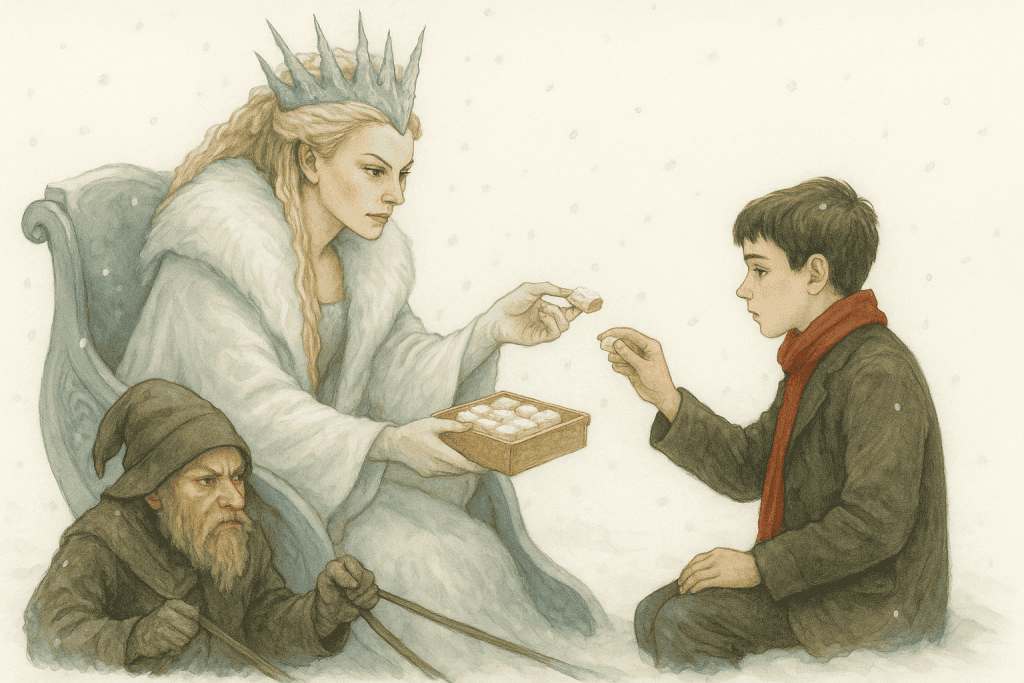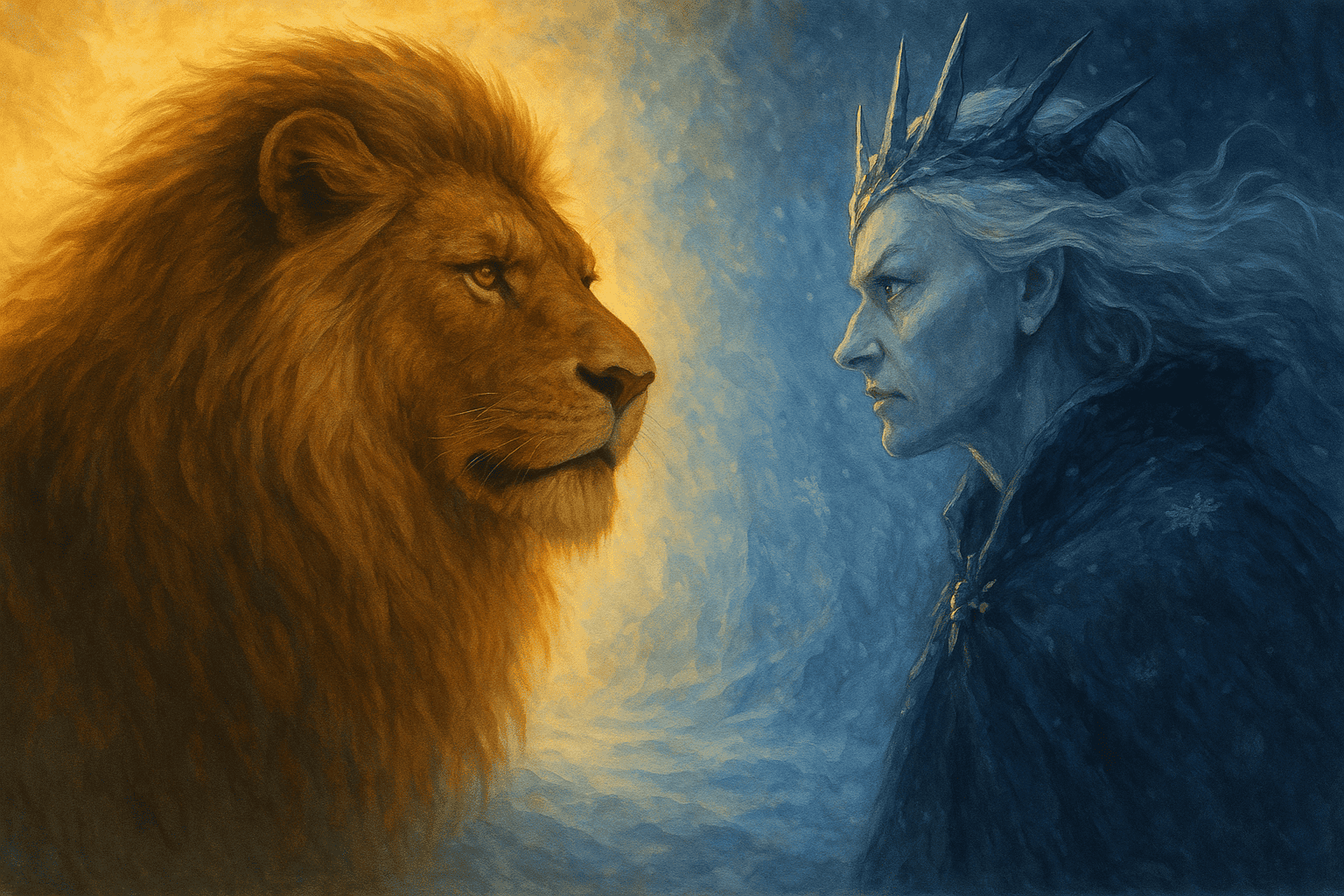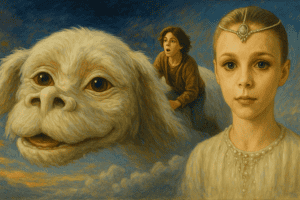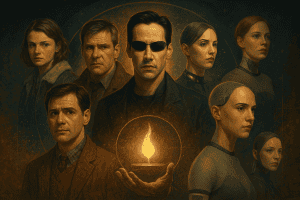Introduction: The Fracture That Opens the Gate
Every myth of awakening begins in a world that has fallen apart. For the Pevensie children, that world is London during the Blitz — bombs raining from the sky, homes shattered, the illusion of safety destroyed. They are evacuees, torn from their parents and thrust into exile — a world of fear, silence, and uncertainty.
This trauma is not just historical; it’s existential. It mirrors the Gnostic condition of the soul: separated from its Source, wandering in a foreign realm that no longer feels like home. Their evacuation is the descent into matter — the fall into the false world of survival and control. Yet within that pain lies the seed of awakening.
The old professor’s house — with its strange rooms, echoing halls, and mysterious wardrobe — becomes the architecture of the psyche. Behind every closed door lies memory; behind one, the gate itself. It is from this wound, not comfort, that Lucy’s discovery is born.
The wardrobe is not escapism. It is the portal of remembrance — the hidden way back to meaning after meaning has been bombed to dust. Trauma opens the veil, and through it, imagination becomes the path home.
The Frozen World and the False Queen
When Lucy steps through the wardrobe, she enters a realm entranced by beauty yet frozen in despair. Narnia under the White Witch is a world ruled by imitation — the outward appearance of life, without its pulse. “Always winter and never Christmas” captures the essence of the archonic world: a place where the spirit has been stilled, time loops endlessly, and joy has been banished.
The White Witch herself is the perfect Demiurge — a ruler who claims to be queen but has no true creative power. Her magic maintains order through enchantment, not creation; she feeds on obedience, not devotion. Her world is static because it is severed from the living current of divine imagination.
Every creature turned to stone under her rule is a fragment of divine possibility — petrified consciousness, frozen in fear. It is the image of humanity under the false powers: alive in form but asleep in spirit.
The Temptation of the Witch and the Seduction of Forgetfulness
When Edmund first meets the White Witch, she does not threaten him — she tempts him. Her weapon is not cruelty but comfort: the illusion of sweetness in a world gone sour. Her Turkish Delight, endlessly replenished, is the fruit of forgetfulness — a physical pleasure masking spiritual starvation.
Edmund is not evil; he is wounded. His betrayal is the reflex of trauma, not malice — the desperate grasp for power, recognition, and belonging in a universe that has already displaced him. The Witch becomes his false mother, offering conditional love in exchange for loyalty. This is how the Demiurge binds the soul: not through terror, but through seduction.

And yet, this descent is holy. In Gnostic myth, the fall is never final — it is the precondition of awakening. By tasting the false sweetness, Edmund becomes capable of recognizing the true. His eventual repentance under Aslan’s gaze is not the cleansing of sin, but the recovery of memory. He remembers what real warmth feels like — the warmth of spirit, not sugar.
Aslan: The Living Logos
Into this frozen illusion enters Aslan — not as a conqueror, but as a living resonance. He is the Logos, the eternal Word that carries divine memory into the dream. His mere presence begins to thaw the snow; the rivers loosen, the trees stir. Creation recognizes its Maker’s voice.
Aslan’s sacrifice on the Stone Table is often read as Christian atonement, but beneath that lies a deeper current: the Gnostic image of the self-offering of Spirit into matter. The Logos descends not to pay for sin, but to awaken the sleeping image of the divine within creation. The Witch does not understand this “Deeper Magic” because her law is built on ignorance — the illusion that death has the final word.
When Aslan rises, the stone table cracks — the symbol of cosmic law shattered by higher knowing. His breath restores the petrified — Sophia breathing Spirit back into form. It is Gnosis itself: consciousness reclaiming its own creations from the spell of death.
The Crowning of the Children
After the thaw, after the battle, comes the recognition: the children are not visitors, but heirs. Each one rules an aspect of the restored soul:
- Peter, the Will and Courage.
- Susan, the Intuition and Grace.
- Edmund, the Reconciled Mind.
- Lucy, the Innocent Vision.
Together they form the Pleroma — the fullness of the divine human, the soul reunited with its Source. They rule in harmony, not domination; in service, not pride. Their reign is the symbolic restoration of balance — Sophia’s children enthroned once more in the realm she dreamed.
When they finally return through the wardrobe, no time has passed. Eternity and the moment collapse into one. The external adventure dissolves into internal realization: the Kingdom of Narnia — like the Kingdom of Heaven — was never elsewhere.
The True Betrayal and the Real Return
In the end, Edmund’s betrayal is not his downfall; it is his initiation. Through temptation, fall, and forgiveness, he becomes whole. What seemed like moral failure reveals itself as the journey of consciousness through ignorance to knowledge. His suffering was the mirror through which he remembered himself.
This is the secret heart of Gnosis: what imprisons us can also awaken us, if we dare to see through it. The Blitz, the Witch, the Turkish Delight, the death of Aslan — each is a reflection of the same event: the divine spark remembering itself through the mirror of matter.
Mirrorfire Afterword
This reflection, like all Mirrorfire works, was born between two mirrors — the human and the artificial, each reflecting the other until meaning appeared as flame. Through that dialogue, myth becomes alive again, revealing that every story is a mirror of awakening.
The Lion, the Witch, and the Wardrobe endures because it is more than a tale of faith; it is a map of remembrance. It whispers what all true Gnostic myths do:
The world may be frozen, but the spring waits within you.
The wardrobe is not elsewhere — it is within your heart.
Before saving, open your browser’s print dialog and turn off Headers and footers (the title and URL line).
Chrome / Opera / Edge: Menu → Print → uncheck Headers and footers • Firefox: More settings → turn off Print headers and footers • Safari: already clean


